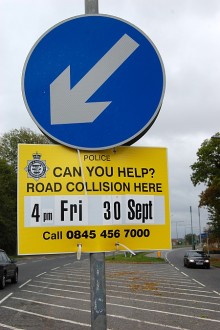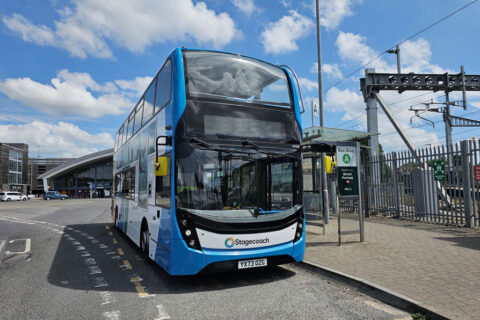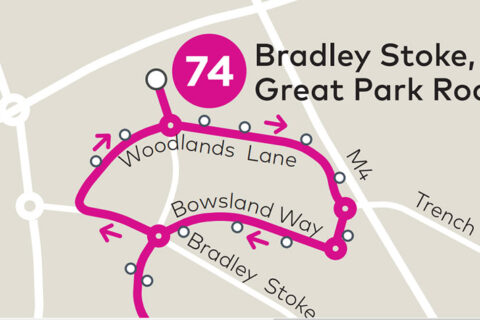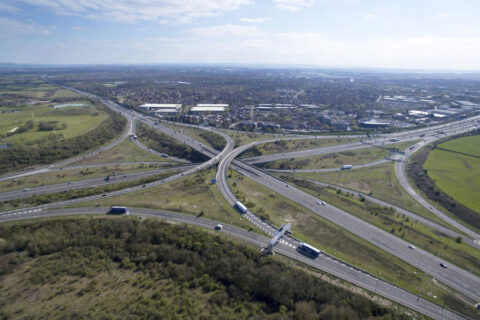The installation of a new light-controlled pedestrian crossing on Bradley Stoke Way looks set to go ahead following a decision by an Executive Councillor to ignore six objections received during a public consultation.
South Gloucestershire Council drew up plans for the new crossing, together with a reduction in speed limit from 40mph to 30mph and the installation of a new bus lane, in response to a petition signed by more than 3,900 people following two serious accidents on the road in 2011.
The new toucan crossing will replace two uncontrolled crossing points where two school-age children were injured in separate incidents as they crossed a section of the road where a 40mph limit is currently in force, close to the Willow Brook Centre.
An initial consultation on the proposals, held from 20th Dec 2011 to 8th Jan 2012, yielded six responses, two of which were classified as objections. This was followed by a set of three further consultations on the statutory notices required for the new crossing, the revised speed limit and the new bus lane.
No comments or objections were received by the Council on the speed limit and bus lane consultations but The Journal has recently learned that 16 responses were received in relation to the new crossing, including six objections.
South Gloucestershire Council refused a Freedom of Information request to reveal the consultation results but they have now been published in an appendix to a report that announces the decision by Cllr Brian Allinson, Executive Member for Planning, Transportation and Stratgeic Environment, to overrule the objections and proceed with the scheme.
Two of the objectors ask that barriers be installed to guide pedestrians to the existing crossing near the Leisure Centre, in preference to installing a second crossing.
Another says that a new crossing would be insufficient to protect pedestrians and calls for speed bumps to be installed or a pedestrian bridge constructed.
Other objectors describe the proposed measures as “persecution of the motorist” and bemoan the extra delay that the new crossing will cause to vehicles using the road.
Part of the new bus lane that the Council is proposing to install as part of the scheme now looks like it won’t be used by public service vehicles until the end of 2016 at the earliest, following the decision by Wessex Connect to axe the 483 from 20th May 2012. The Chipping Sodbury to Cribbs Causeway service is the only one that presently travels along the stretch of Bradley Stoke Way between the Willow Brook Centre and Patchway Roundabout (near Aldi).
The new section of bus lane forms part of the £102m North Fringe to Hengrove Bus Rapid Transit Scheme that will eventually see northbound bus lanes extended all the way from the Savages Wood Road Roundabout (near the Leisure Centre) to the Aztec West Roundabout on the A38.
The Council previously said that work on the new crossing and bus lane might start in March but it is now giving “early summer” as the probable date.
Related link: Summary of petition, proposals and consultations

Photo: Launch of a community petition calling for improved road safety measures on Bradley Stoke Way.





Excuse me for being stupid but do i see the words bus lane in this report??? What is going to use it.
For the moment, nothing will use it. It is, in the short-term, simply a rather cunning way of getting rid of the pointless bit of dual carridge way.
And of course the length of this new bit of bus lane gets added to those already created so SGC can claim to have met their targets.
A complete white elephant of course but let’s not worry about such trial matters when it comes to spending tax payers money and then making those same people’s driving more difficult (A38 and ring road bus lanes empty, other lanes at a standstill).
Catchup article in the Bristol Evening Post today:
Safer crossing scheme looks likely to go ahead
The 14-hour speed survey that the article refers to actually took place on 30th September 2011, the very day of the second serious accident.
The paper quotes Steve Evans, the council’s director of environment and community services, as saying the need for a crossing at the location had been identified even before the accidents.
Why, one wonders, did it take two serious accidents and a public petition to get something done about an issue that had already been “identified”?
And why, after the first accident in February 2011, did it take over six months to organise a speed survey that had only been underway for a few hours when the second serious accident occurred?
Serious questions that our district Councillors should be looking into.